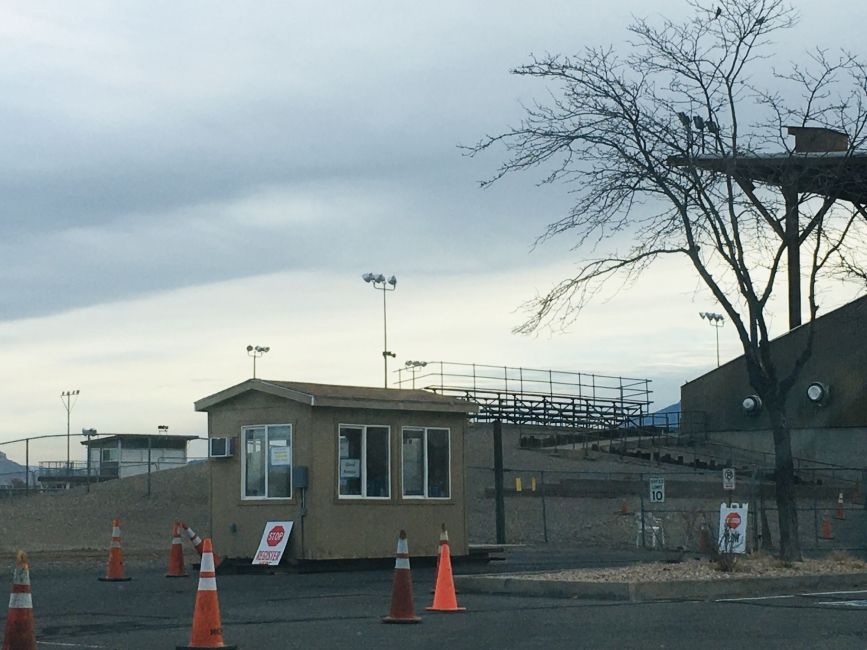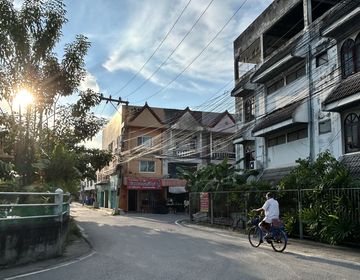A Traveler's Guide to COVID-19 Testing
As a result of the coronavirus pandemic, many countries are requiring travelers to receive a negative COVID-19 RT-PCR test prior to entry. Thailand has some of the strictest entry requirements, requiring travelers to obtain negative COVID-19 test results within 72 hours of departure from the originating country, and then, these results must also be certified by a physician. Additionally, your doctor must complete a Fit to Fly form for you. For me, this was the most nerve-racking aspects of the process because the timing of results was entirely out of my control. I knew that a positive test, or results that came too early or two late, could jeopardize my entire trip, which I had spent months preparing for.
COVID-19 cases in my Colorado hometown have been on the rise for several months. The weeks before my planned departure, the infection rate skyrocketed, and several schools in my district began to shut down due to cases among students. At the time, I was working at a middle school and planned to self-quarantine for the three weeks before I was scheduled to leave, unwilling to risk testing positive at the last minute. I said early goodbyes to my family, made a final grocery store run, and committed myself to my house for the next several weeks.
Six days into my quarantine, I received a notification email from the health department informing me that I had had primary exposure on my very last day of work. I made a few panicked phone calls to my doctor’s office and was told that a person can test positive for the virus for up to three months after they are no longer contagious. I knew that if I had it, it was unlikely that I would get a negative test two weeks from then. Fortunately, I tested negative a few days later, but despite my diligent awareness and constant caution, exposure nearly derailed my travel plans. Visa application complications delayed my trip another three weeks, and my quarantine ended up being a grueling six weeks of isolation before even leaving the country. This was likely longer than necessary, but I did successfully minimize my risk.
Finally, the week before my departure, it was time to begin testing. I ended up taking six COVID-19 tests trying to hit the 72-hour window, which sounds excessive, but still, none came back exactly when I needed them to. I was departing the country on a Wednesday evening, leaving home the Tuesday before, had my doctor’s appointment scheduled for that Tuesday morning, and really needed results on that Monday. There are several testing sites in my area, one that instructs you to expect results within a vague 2-7 day window and several others within 24-72 hours. I tested that Thursday, Friday, twice on Saturday, and twice on Monday (all sites in my area are closed on Sunday). The first four tests came back too early, the last by only a few hours. The two Monday tests did not come back until Wednesday morning and Wednesday afternoon, long after I had my doctor’s appointment and left the city.
To further complicate things, several of the sites only provide email results, and for travel, you are required to present an official lab report at the airport. I ended up getting the last set of results issued on Sunday certified, which got me through my first flight check-in, and when I received results from the first Monday test, I was able to have my doctor certify those from the airport, and I persuaded a customer service representative to print them for me. It is fortunate that I did because at the paperwork check before my last connecting flight to Thailand, they refused to accept the first set. The entire experience was a stressful, uncontrollable mess, but from it, I gained insight into the process and have several pieces of advice for anyone required to obtain a COVID-19 test for international travel.
1. Make every effort to limit exposure before your trip. Three weeks may not be enough. Begin isolating to the best of your ability as early as you can because you could test positive for longer than you think.
2. Research testing options in your area. Keep in mind that there are no guarantees, and your results could come back at any time.
3. Take more than one test to ensure that your results come back within the acceptable window.
4. If your testing site does not offer official lab report results, you may be able to contact the laboratory processing the tests to obtain such a report.
5. Make sure your lab report clearly states that you took an RT-PCR test. Rapid tests, and sometimes self-swab tests, are unacceptable.
6. Arrive early for drive-thru testing if you do not have the option to make an appointment, and bring a blanket if you live in a cold climate. Many drive-thru sites ask you to turn your car off while in line to avoid carbon monoxide accumulation from the idling cars.
7. Make an appointment in advance to get your results certified by your doctor. Be proactive, and talk to your doctor about how to have your results certified in the event that they come back after your scheduled appointment.
8. If your doctor makes a mistake on your form, have them fill out a new form (I was almost denied boarding onto my final flight because of an error on my Fit to Fly form that my doctor had corrected and initialed).
My negative test results were repeatedly scrutinized at every airport, but I have successfully made it to Thailand and am safely secured in my quarantine hotel. All six incredibly unpleasant nasal swabs were absolutely worth it in the end, but I am not eager to repeat the process.
Related Posts
One Month in Thailand: The Stages of Adjustment
Coming up on my one month of living and working in Thailand, here are some of my tips and tricks for adjusting to your new life here (based on my experience)
A School Day in My Life Teaching Pre-K
A month or so before moving to Thailand, I got the email that I was assigned to teach pre-kindergarten. I was ecstatic – I’d been hoping I’d get placed working... keep reading
The Hard Part No One Talks About: My Lessons Learned & Gentle Reminders
Teaching abroad is magical, but the adjustment period is less so. This post dives into my first month in Thailand struggling with self-doubt, comparison, homesickness, etc., as well as mindset shifts and practical advice that helped me find my footing.




